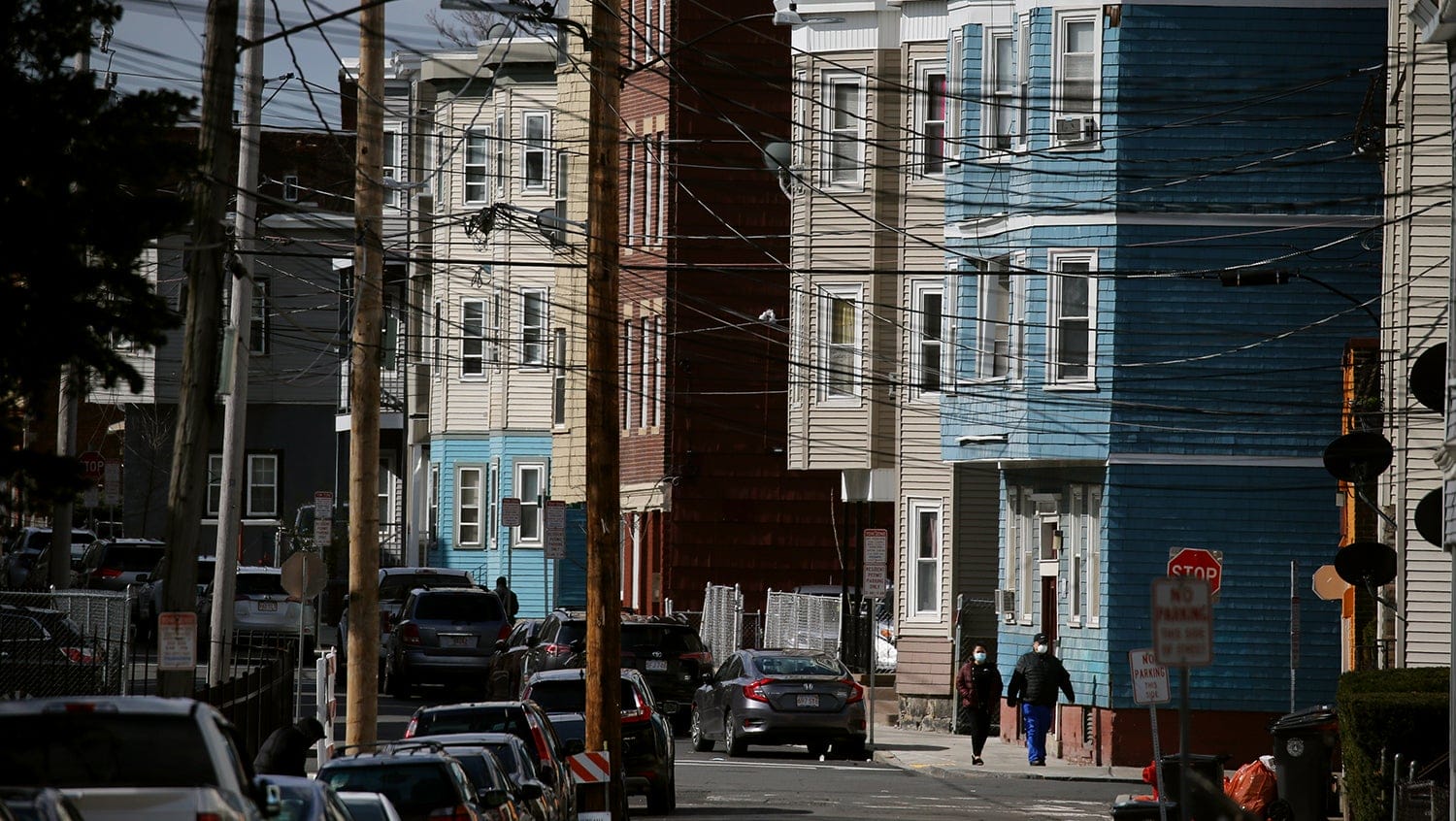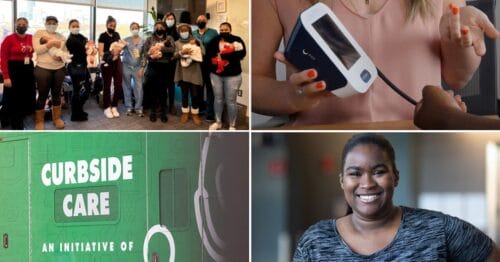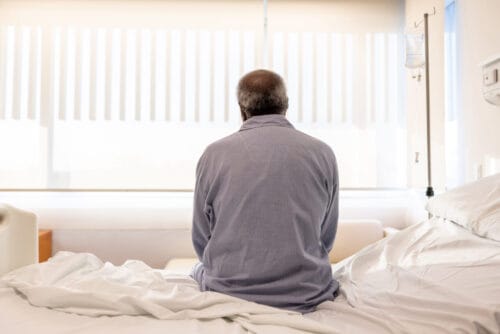'Good Intentions Aren't Enough': Forum Examines Root Causes of COVID Race Disparities
July 29, 2020

Getty Images
In 'The State of Race,' experts shine a light on the existing inequities laid bare by the pandemic and the need to move beyond good intentions to real change.
As COVID-19 began to surge in the United States, it quickly became clear that the disease was especially devastating for older adults and those with certain underlying health conditions. Now it’s well-known that it is also taking a disproportionate toll on communities of color across the nation and here in Boston.
A recent virtual forum hosted by WGBH and The Boston Globe in partnership with NAACP Boston Branch and WORLD Channel delved into some of the inequities local Black communities face that contribute to greater vulnerability in a crisis.
“The challenges of growing up Black and brown in Boston have always been daunting. Now, due to COVID-19 pandemic, the profound inequities of health, income, housing, and education are even more stark,” said journalist Dan Lothian, moderator for “The State of Race: COVID-19.”
He presented some telling data: In Boston, Black people represent 25.3% of the city’s population, yet they make up 37% of known COVID-19 cases and 35% of known COVID-19 deaths.
“The big question is why, and what can be done about it?” Lothian said.
Here are five key takeaways from the conversation with panelists Tanisha Sullivan, Esq., NAACP Boston Branch president; Thea James, MD, vice president of mission and associate chief medical officer at Boston Medical Center and Adrian Walker, Boston Globe columnist.
1. The pandemic exposed existing inequities that make communities of color vulnerable.
“The public health pandemic really highlighted the real and deep health disparities that have existed for quite some time, and it also exposed the very deep economic inequality that exists even here in the commonwealth,” Sullivan said.
At safety-net healthcare institutions like BMC, James noted, many patients are seen in the emergency room repeatedly or are admitted to the hospital multiple times in a year. In talking with them, she has learned that many cannot prioritize their health because they are simply trying to survive.
“They are coming from communities that have been disinvested in, which created these structural barriers,” she said. “Structural racism essentially has prevented them from achieving the sorts of things that enable them to thrive and certainly to weather something like COVID. Financial stability, economic mobility, opportunities to build wealth — all of these are protective factors when you are stressed by a certain type of crisis. Inequities in these areas impact health.”
2. COVID-19’s disproportionate impact should not have been a surprise.
Panelists were emphatic that the disparate toll on communities of color could have been predicted and, to some extent, prevented. There was “no doubt” the pandemic would take a larger toll on Black and brown communities, James asserted. “We could have predicted the outcomes and data. What COVID laid bare for the country is laid bare at BMC 24/7.”
Walker noted that hard-hit Chelsea, with so many low-income households and workers whose jobs could not be done from home, was “a Petri dish of inequality — a perfect example of all the things the pandemic has exposed.”
3. Inequities persist even in progressive and resource-rich locales.
Panelists responded to a question on how such disparities could happen in a progressive state like Massachusetts.
“Quite simply,” Sullivan said, “even in progressive, liberal Massachusetts, we have yet to really wrestle with our own history and current existence with racism.” She added, “We have all of the resources, one would think, to have avoided the outcomes we are seeing with the COVID-19 pandemic. But the reality is, we still have structural racism here in the commonwealth.”
James added, “We also live in a state that has ‘universal’ health insurance — over 90% of residents of the commonwealth have health insurance. It’s there, but people can’t prioritize it. They are busy trying to use their limited resources on housing, or food, or transportation. They can’t think about using money for prescriptions and co-pays.”
To begin to tackle these problems, James said, “We have to understand the intersections — how structural racism impacts all these various things despite having all these resources.”
4. Good intentions aren’t enough.
Eradicating structural inequities requires real courage to disrupt and change policies, systems, and seats of power, panelists said. In response to a question about hospital policies that are not intentionally harmful but still adversely affect people of color, James said, “It depends on who you have on the board, how awake and aware people on the board are. They may not do something intentionally, but there has to be some mechanism of recognizing [harmful policies]. There has to be a reckoning.”
Sullivan agreed: “We have to get to the point where we push past this idea that if you’re a good person with good intentions, the outcome doesn’t matter.”
The confluence of the pandemic and this summer’s surge of Black Lives Matter demonstrations have created a moment when bold change seems both necessary and possible — if there’s sufficient will to act.
“In this moment, we have seen people of every background saying, ‘Oh my goodness, I didn’t realize that this is what racism looks like,'” Sullivan said. “People across the commonwealth are saying black lives matter. The next step beyond saying that is to understand that if your actions and your policies are having an adverse impact on people of color, and that’s not your intention, then you need to be willing to disrupt that policy, to change that policy. It can no longer be ‘It’s not our intention to cause harm.’ We have to be intentional about focusing also on the impact.”
5. For all its ravaging, the pandemic also is providing crucial insight.
While there’s no true silver lining, panelists were asked to reflect on anything positive in the response so far.
“The pandemic has absolutely mobilized the black community to take responsibility for our own survival,” Sullivan said. “Black and Latinx communities are demanding access to testing. It has been communities standing up for ourselves. That’s a bright spot.”
On the healthcare side, James said, “It’s given us more insights into how something like COVID can happen and its outcomes. People are doing work inside hospitals, having conversations, making plans to address root causes. It was a great exercise to be prepared for next time — and not just addressing what will happen, but prevention.” Such learning could help inform James’ contributions as a member of the city of Boston’s new COVID-19 Health Inequities Task Force, whose aim is to analyze race and ethnicity data and make recommendations for equitable healthcare access.
Walker said, “If anything good comes out of this, I hope it will be that we will begin to come to terms with the structural issues that lead to this kind of tragedy that is so preventable.” He injected a note of caution, though: “We need to slow down on congratulating ourselves. It’s going to take a lot of intention and sustained focus.”
The July 22 forum was the first in the “State of Race” series, which is slated to continue in September and throughout the fall.
Read Next: ‘Healthcare and Racism: Changing Predictable Outcomes’ »


